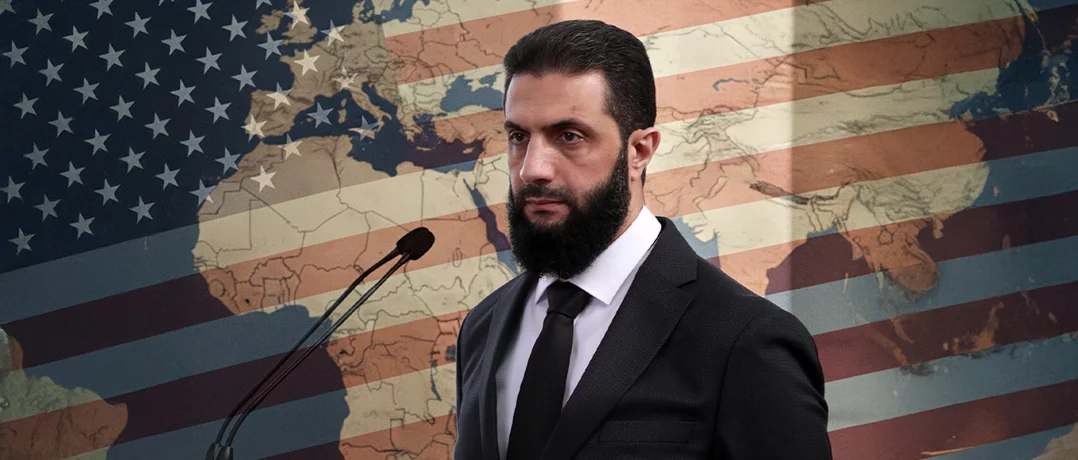A deep dive into Ahmad al-Sharaa’s contrasting ties with U.S. envoys Robert Ford and Thomas Barrack.
A tale of two envoys: Ahmad Al-Sharaa's divergent relationships with two American ambassadors
A tale of two envoys: Ahmad Al-Sharaa's divergent relationships with two American ambassadors


From insurgent to president: Al-Sharaa’s unprecedented rise
Few have undergone a transformation as drastic as Syrian President Ahmad al-Sharaa. His meteoric rise from former al-Qaeda insurgent Abu Mohammed al-Julani fighting U.S. and NATO forces in Iraq to Syrian president marks one of the most consequential political evolutions in recent Middle Eastern history. Yet behind his political ascent and rebranded image, two powerful U.S ambassadors have proved decisive in shaping al-Sharra’s trajectory: Robert Ford, the U.S. Ambassador to Syria from 2011-2014, and Thomas Barrack, the current U.S Special Envoy to Syria and Ambassador to Türkiye. The nature of al-Sharaa’s relationship with the former and current U.S. ambassador respectively is markedly different. With Barrack, al-Sharaa has cultivated strong relations to further his immediate political goals and consolidate his power within a more stable Syria. Yet despite his growing closeness with the current U.S. Special Envoy, al-Sharra has distanced himself from Ford, as the latter's recent comments have threatened to undermine HTS’ role in overthrowing Assad through giving greater credit to U.S. involvement in the matter.
Rebranding a militant Past: From Al-Nusra to HTS leadership
Born in Saudi Arabia, al-Sharaa grew up in Damascus before joining al-Qaeda following the US’s invasion of Iraq in 2003. After being captured then released from Abu Ghraib prison in Iraq, al-Sharaa returned to Syria where he established and led al-Nusra front, al-Qaeda’s affiliate organization in the country. When relationships soured with al-Qaeda leader al-Baghdadi over his decision to create an Islamic state, al-Sharaa rebranded al-Nusra Front as the Hayat Tahrir al-Sham (HTS) in 2017 after merging with four smaller Syrian factions. Over the following years, HTS steadily amassed power, becoming the forefront opposition group to the Assad regime. When HTS spearheaded the regime’s fall in December 2024, al-Sharaa became Syria’s de facto leader, before he was named interim president in January 2025.
Allies and adversaries: Barrack, Ford, and the battle for legitimacy
Although Barrack and al-Sharaa’s relationship only began in 2025, throughout the year, both have benefited from their strategic partnership. al-Sharaa, for instance, credits Barrack with cultivating international approval for his administration and advocating for the lifting of US sanctions that occurred in May. Barrack played a pivotal role in the U.S. State Department’s removing HTS from its list of foreign terrorist organizations in July. Barrack, meanwhile, has leveraged his strong relationship with al-Sharaa to increase credibility for his ambassadorship. As many viewed his appointment to ambassador as merely the result of his close relationship with Trump, Barrack has used his role in Syria as proof of his competency and growing influence in the Middle East. As recently as October 7, 2025, al-Sharaa hosted Barrack and the U.S. Central Command Commander Admiral Brad Cooper in Damascus to facilitate the implementation of the March 10 agreement between the Kurdish-led Syrian Democratic Forces and the Syrian government. This followed discussions in New York between Barrack and al-Sharaa in late August, when al-Sharaa became the first Syrian leader to address the UN assembly in 60 years. While Barrack and al-Sharaa appear to have forged a symbiotic relationship, the Syrian president’s relations with former U.S. Ambassador to Syria Robert Ford has recently turned contentious.
In May 2025, Ford disclosed two private conversations with al-Sharaa that occurred in Idlib of March and September of 2023 that sought to “rehabilitate” al-Sharaa and incorporate him into mainstream politics. According to Ford, a third and final interaction took place in January of this year, after the collapse of the Assad regime, to help reposition HTS as a more moderate group that was a critical component of the Syrian opposition. al-Sharaa nevertheless dismissed the claims, declaring that the discussions with Ford were a part of larger British delegation visits that sought to learn more about Idlib’s local governance model. According to the Syrian presidency, the meetings were not secret and did not address the sensitive political topics Ford referenced.
Ford’s suggestion that the two men engaged in secret discussion is problematic to the new Syrian president, as it highlights the U.S.’ efforts in enabling al-Sharaa’s rise and consolidation of power. By downplaying the meetings, al-Sharaa and the Syrian government can maintain the narrative of their primarily domestic rise to power, as opposed to one assisted, to some degree, by the West. Particularly as al-Sharaa continues to oversee an uncertain Syria still plagued by sectarian violence, any perception that he is a product of Washington’s intervention could undermine his credibility. Fortunately for al-Sharaa, his main point of contact within the U.S government is now Barrack. Whether al-Sharaa and Barrack maintain a positive relationship depends on their ability to advance one another’s interests. Regardless, cultivating strong partnerships with members of the Trump administration writ large will be key to realizing al-Sharaa’s goal of establishing a stable Syria that is more effectively incorporated into the international fabric.

